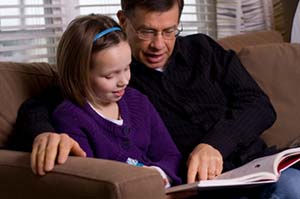Guided reading - How to develop reading comprehension skills in older children
By Janet Castrejon

Guided reading is a teaching technique that trains beginning readers to use reading comprehension strategies. Children practice using these strategies under adult guidance so that they will be able to use them independently later. These strategies also help children better understand when reading books in a foreign language.
Before reading
- Look at the title of the book and the picture on the cover and have the child make predictions about what the book is about.
- Ask them what they already know about the topic of the book. For example, if it's about a whale, ask them what they know about whales.
- Go over difficult words. Ideally you will have elicited some of the vocabulary already in your discussion in the previous two steps.
During reading
- Point out context clues or clues in the illustration (if the book is illustrated) for words the students don't understand.
- If you use a dictionary to look up a word when reading in a foreign language, use a monolingual one so that the definition will also be in the target language.
- Help them sound out words and look for familiar parts of words. For example, if it's a compound word such as "wristwatch" break it up into the two parts so that it looks familiar to them. With your thumb cover one part of the word at a time to allow them to see the two words inside the compound word. You could also do this to let them see familiar prefixes or suffixes in a word.
- Periodically stop them and ask them questions to check for understanding or have them predict what they think will happen.
After reading
- Check for understanding by asking them to retell the story in their own words.
- Ask them if they liked or disliked the book and why.
- Ask them who their favorite character was and why.
After reading a book once with an adult through guided reading using these strategies, the child could re-read the book independently on another day.
Related Articles
How to build vocabulary when reading with young children
How to use word play for language development and literacy


